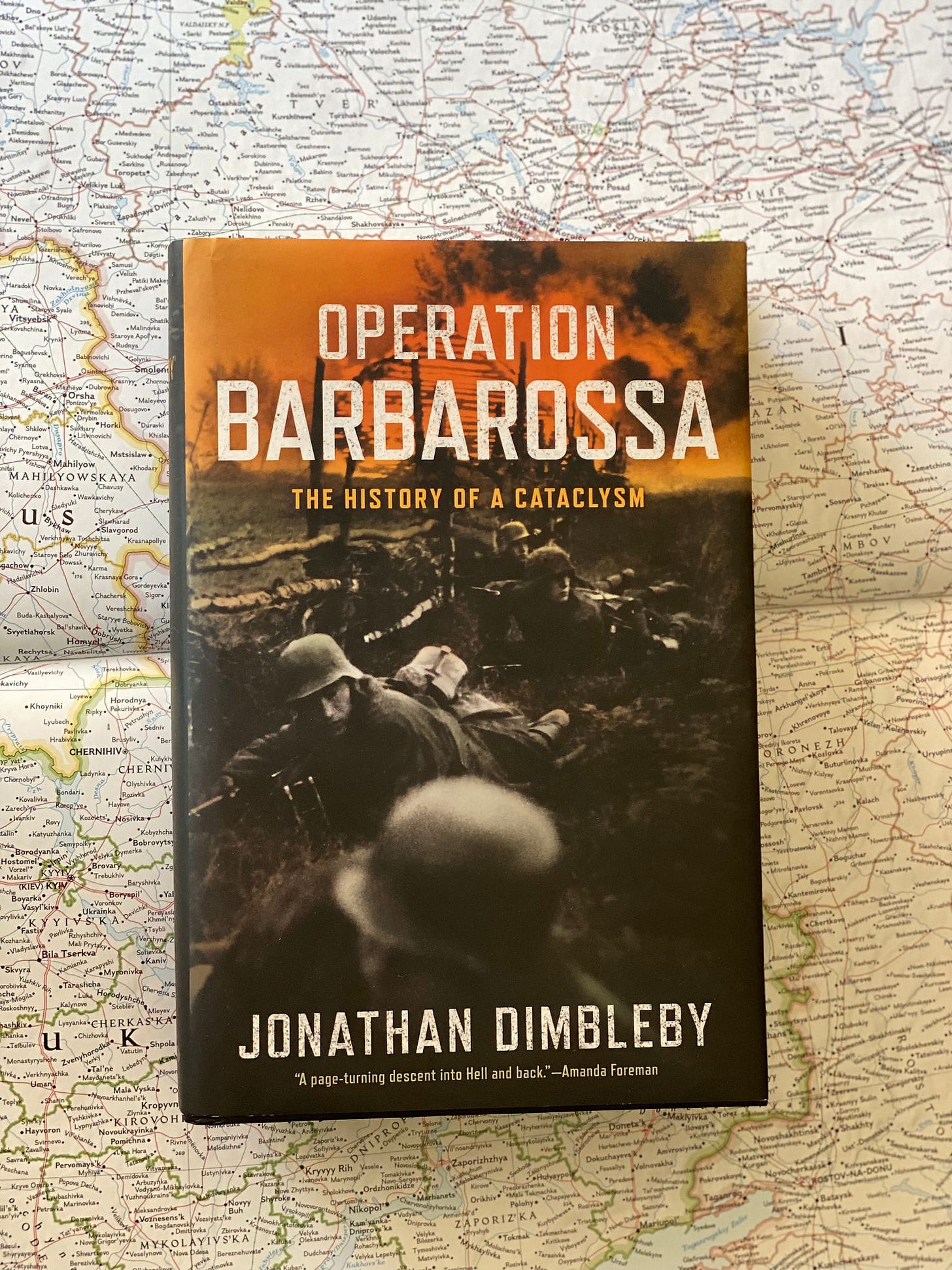Review of OPERATION BARBAROSSA: The History of a Cataclysm
The greatest war of modern times that Americans know the least about
A few years ago, Andrew Roberts wrote Churchill: Walking with Destiny. I believe it to be the best of many single volume biographies of Churchill that I have read. I laughed, cried and marked up almost every page. I learned so much and had so much fun doing so that Andrew Roberts became a member of my “must read” club. I like to read the blurbs before buying a book though I take them with a grain of salt. I only look at the blurbs after reading a review or two that points me in the direction of the book. The longer the book, the more reviews and blurbs I need to convince me. When Andrew Robert’s was quoted in a blurb that Operation Barbarossa is the finest single volume history of this terrible war, I was hooked. Before that, I had read a couple very complimentary reviews but wondered if I could read another book on the horrors of the Eastern Front in WWII. Roberts settled that issue.
This book is long but reads quickly. There are good maps and Dimbleby’s story has a human and historical dimension to it that masticates the relentless military narrative of history’s greatest and most ghastly conflict. It should be read even if military history is not your thing, In the grand scope of things, the Eastern Front dwarfs even the trenches of WWI as the Iliad of modern war. Almost 30 million Russian soldiers and citizens died in The Great Patriotic War. The Soviets killed 85% of the German soldiers who died in WWII. They defeated the Nazis while we saved Western Europe with our long overdue Normandy invasion from being occupied by the largest army, the Red Army, ever assembled by man. One million Russians starved to death in Leningrad. Millions of prisoners were captured by both sides with each having a 10% chance of survival. The Soviets likely shot more of their own soldiers than the Americans lost in the whole war. That’s just the war and some of it may be familiar but what Dimbleby gives you also is a terrific, nicely structured preamble to the 3:00 in the morning June 1941 invasion by a Wehrmacht war machine stretched across a 2300-mile front. You learn that no small part of that German war machine came from Soviet resources and even factories located in the Soviet Union. You can thank the ineptitude of Mussolini’s army in handling the occupation of Yugoslavia for the fateful delay of Barbarossa by a month – a month that might have delivered a victory to Germany. Hitler is sometimes a disturbingly brilliant or just “lucky” leader that nobody stands up to with the resultant hubris guaranteeing him defeat from the first day. Stalin had killed most of his competent generals during the purges and was surrounded by sycophants too frightened to wake him up to tell him about the invasion. Even then, he did not believe it for days. All through this book there looms two of the most terrible men of history. But, while the numbers who died make Stalin an unimaginable cold-blooded killer, the accounts of the killing fields that swept in behind the Nazi advance into the Soviet Union are almost unreadable. This book sheds light on many things but what I took most viscerally from it was how much the German people, particularly the German soldiers, had bought into the murderous demonic vision of Hitler. Thank God for Operation Barbarossa horrors and all … I am not sure there was any other way to extinguish the madness of Nazi Germany.
Operation Barbarossa: The History of a Cataclysm
By Jonathan Dimbleby (2021)
640 pages with notes


